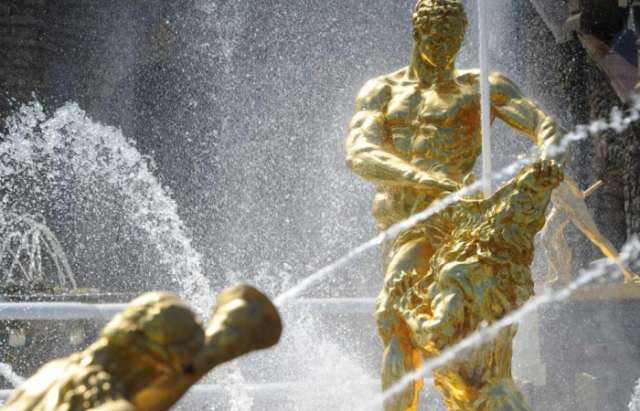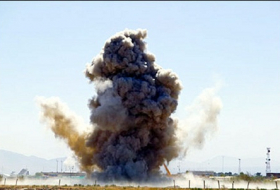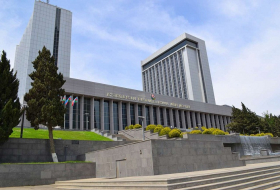Fountain of Apollo, Versailles
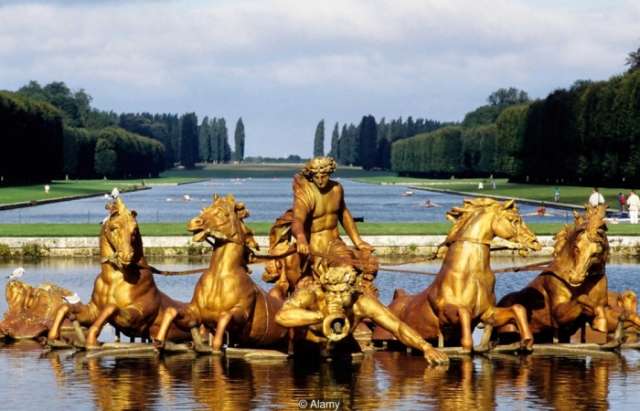
The Palace of Versailles occupies 2,000 acres (8 sq km), more than twice the area of Manhattan’s Central Park. But, then, the self-styled ‘Sun King’ was never less than overweeningly ambitious. Louis XIV saw himself as the Apollo of his day, and the finest of the fountains created for the palace gardens when revamped by André Le Nôtre from 1662 was inspired by the idea of the Roman sun god rising from the sea at dawn on his light-bringing ride across the heavens. Designed by Charles Le Brun, this magnificent eye-catcher with its foaming horses, whales and tritons blowing water from wreathed horns, stands at the head of a mile-long canal that makes the palace gardens seem all but infinite. (Credit: Alamy)
Jet d'Eau, Geneva
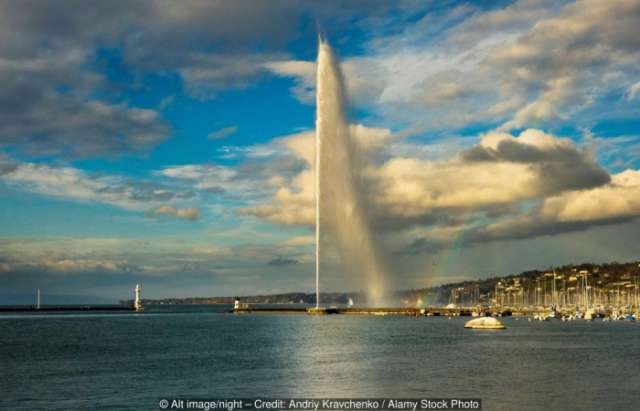
Jet d'Eau, GenevaIf, on freezing or windy days, you go in search of the source of this world famous and much copied fountain opened here in 1951, and a symbol of the Swiss city ever since all you will find is a plain 4-inch (10cm) diameter nozzle. No bronze sea gods, no copper mermaids. But if the wind drops or the thermometer rises, it’s time to run as that innocuous nozzle sends seven tons of water shooting 460 ft (140m) into the Alpine sky at 120mph (200kph). Fed with millions of air bubbles, the water gleams snow white, sparkling with rainbows when the sun shines through its sky-reaching plume. Sometimes, the simplest things really are the best. (Credit: Guy Croft / Alamy Stock Photo) (Alt image/night – Credit: Andriy Kravchenko / Alamy Stock Photo)
Stravinsky Fountain, Paris
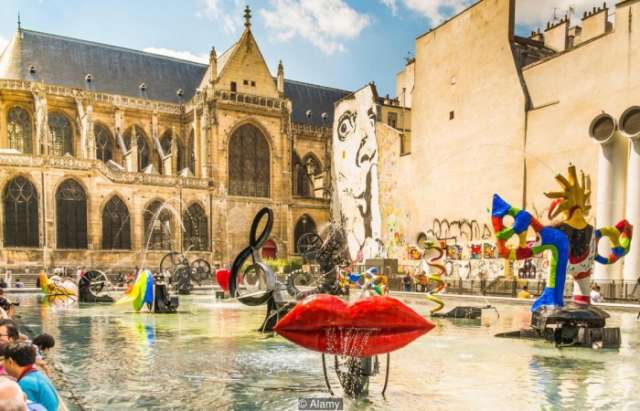
Stravinsky Fountain, ParisSet between the Flamboyant Gothic 16th-Century church of Saint-Merri and what the playful French sculptor Jean Tinguely described as the “superb monstrosity” of the Pompidou Centre, the Stravinsky Fountain must surely make even the most high-minded art historian smile. One of seven new Parisian fountains commissioned by presidential decree in 1978, Jean Tinguely and Niki de Saint Phalle’s colourful kinetic fountain evokes themes in the works of the Russian-born composer Igor Stravinsky. For Stravinsky and his contemporaries, the circus was a popular theme and this charmingly surreal fountain is suitably clown-like. When it opened in 1983, above Pierre Boulez’s underground music research centre, Le Monde thought it had “the character of a mechanical music box of the 18th Century”. (Credit: Alamy)
Naqsh-e-Jahan Square, Isfahan
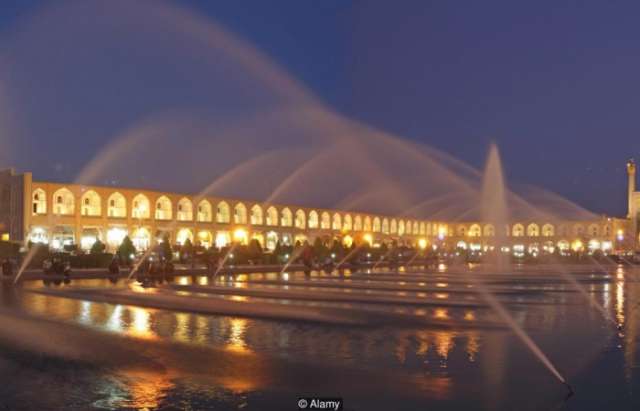
Naqsh-e-Jahan Square, IsfahanThis vast arcaded public space only Beijing’s Tiananmen Square is bigger is the expansive heart of Isfahan, a great historical trading city in what is now Iran. It was laid out to designs of Shaykh Bahai between 1602 and 1629 for Shah Abbas who had recently moved the Safavid capital to this new location. Flanked by the Shah’s sublime palace, two magnificent mosques and a gateway to the city’s grand bazaar, it was a remarkable meeting point for very many trades, peoples, cultures and even religions. The fountains were added during the reign of the last Shah of Persia, Mohammed Reza Pahlavi, deposed in 1979. On summer days when the temperature regularly rises to 35C (95F) and above, they are a particularly welcome addition. (Credit: Alamy)
Fountain of Prometheus, Rockefeller Center, New York
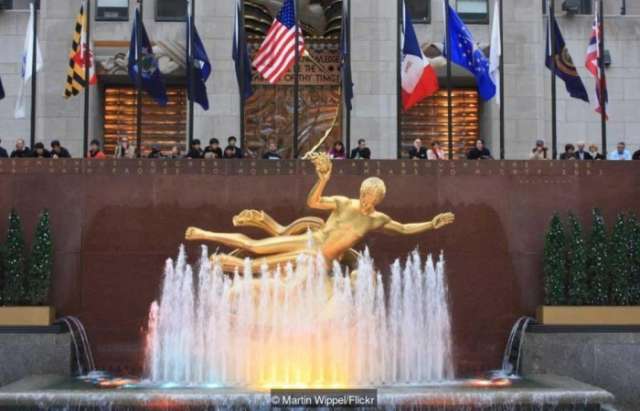
Fountain of Prometheus, Rockefeller Center, New YorkIce-skating in the sunken plaza of the Rockefeller Center is one of those ‘must do’ experiences for visitors to Manhattan as well as for New Yorkers themselves. They have been watched over since 1934 by the calm gaze of Prometheus, the Ancient Greek Titan who brought fire from Mount Olympus to Earth to advance human civilisation. Here he is, in the guise of a gilded bronze Art Deco-style sculpture by Paul Manship, flying across the plaza against a backdrop of red granite and accompanied by a chorus of water jets. Standing at the foot of the RCA Tower, or ‘30 Rock, as the headquarters of NBC TV is known today, this is surely one of the world’s best known artworks. (Credit: Martin Wippel/Flickr)
Trevi Fountain, Rome
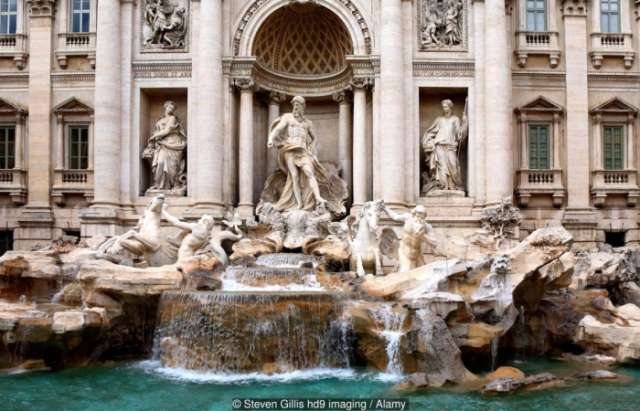
Trevi Fountain, RomeThis 18th Century Roman Baroque confection representing the taming of the city’s waters under the watchful eye of Oceanus, a sea god bestriding a travertine oyster shell, attracts tides of visitors. Coins tossed into its generous basin 3,000 euros a day subsidise supermarket credit cards for Rome’s needy. Commissioned by Pope Clement XII in 1730, its fanciful design all tritons, stampeding horses, wild rocks, gods and muses was the work of the architect Nicola Salvi, and made all the more dramatic by the imposing backdrop of Palazzo Poli, re-designed to frame the fountain. A compelling urban set design, it has featured in several films, notably Federico Fellini’s La Dolce Vita with Anita Eckberg frolicking in its waters. (Credit: Steven Gillis hd9 imaging / Alamy)
Fountain of Joy, Kolkata
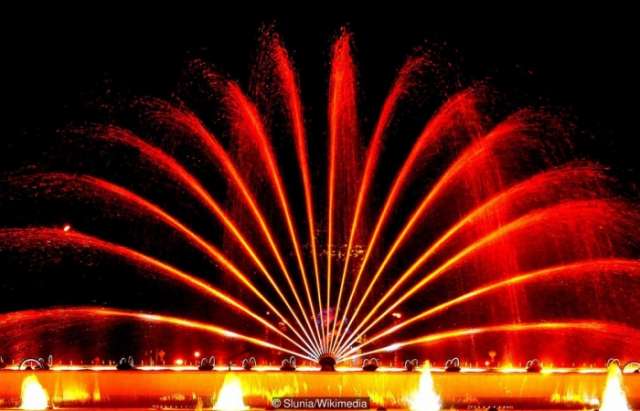
Fountain of Joy, KolkataIt was a rather joyless moment for the Calcutta Electric Supply Company when in 1991 its generous gift of a dancing musical fountain close by the Victoria Memorial in the city’s Maidan park was denigrated by critics and denounced by protestors. How dare the power company waste electricity when the Indian city was wracked by power cuts and when so many of its poorest inhabitants had no electricity to light their homes let alone to play with. The fountain was abandoned. But, the urban mood has changed since then, and in 2012 the sashaying fountain was re-opened. With its valves opening and closing 12 times a second, this joyous fountain dances to music, producing wave after wave of eye-boggling effects. (Credit: Slunia/Wikimedia)
Samson Fountain, Peterhof, St Petersburg
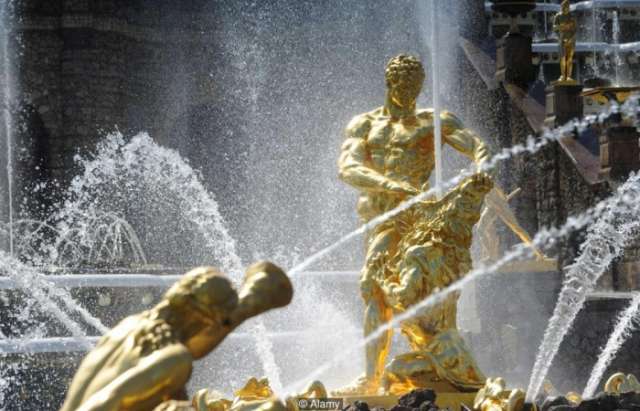
Samson Fountain, Peterhof, St PetersburgOn 27 June 1709 - St Samson’s Day - Peter the Great crushed the invading armies of Sweden’s King Charles XII at Poltava in Ukraine. The centrepiece of the Grand Cascade of 64 fountains stepping down from Peterhof, Tsar Peter’s palace, to the Baltic near St Petersburg along an arrow-straight canal is Francesco Rastrelli’s fountain crowned since 1802 with a gilded bronze sculpture of Samson wrestling a lion by Mikhail Kozlovsky. The lion symbolised Charles XII, Samson the victorious Russian tsar. They were a perfect aesthetic foil to Peter’s operatic ochre and white palace, a 1730s riposte to Versailles. In the 1940s, the German military wrecked the palace. They stole the statue of Samson, replaced in 1947 by a replica by Vasily Siminov. Restoration of the palace continues. Seen through plumes of sparkling water, Samson is now said to represent civilisation triumphing over brutality. (Credit: Alamy)
Diana, Princess of Wales Memorial Fountain, Hyde Park, London
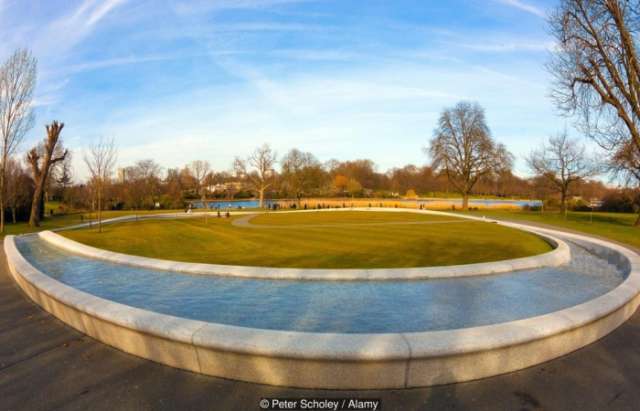
Diana, Princess of Wales Memorial Fountain, Hyde Park, LondonOpened by Queen Elizabeth II to very mixed reviews in July 2004, this landscape fountain, designed by Kathryn Gustafson, has become increasingly popular over the past decade. Its opening was somewhat marred when early visitors slipped and hurt themselves on the fountain’s slippery, computer-crafted Cornish granite stones. Water cascading down the two sides of the large oval fountain smoothly on one side, rockily on the other reflecting the Princess’s life soaked the surrounding parkland, creating bog-like conditions. These problems were solved and today the Royal Parks tells visitors to “please feel free to sit on the edge and refresh your feet”. (Credit: Peter Scholey / Alamy)
Floating Fountains, Osaka
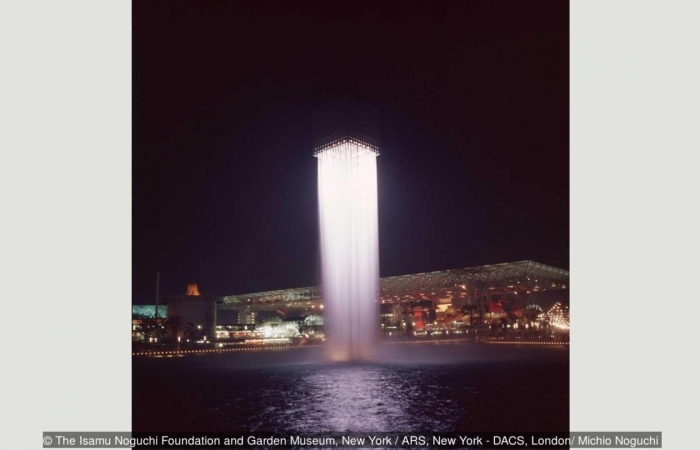
Floating Fountains, OsakaThese decidedly modern fountains appear to float with no connection to ground or water over an artificial lake. A brilliant cinematic feat of artistic ingenuity and clever plumbing they were dreamed up by the Californian sculptor and landscape architect Isamu Noguchi for Expo’ 70, the first World’s Fair to be hosted in Japan. Only when they are not working is Noguchi’s mystifying game given away. Water is pumped up to the sculpted floating fountains through vertical pipes invisible when the fountains flow. Happily, Noguchi’s artwork has remained long after the futuristic 1970 exhibition had vanished into folk memory. (Credit: The Isamu Noguchi Foundation and Garden Museum, New York / ARS, New York - DACS, London/ Michio Noguchi)
/BBC/
More about: #arts #fountains








